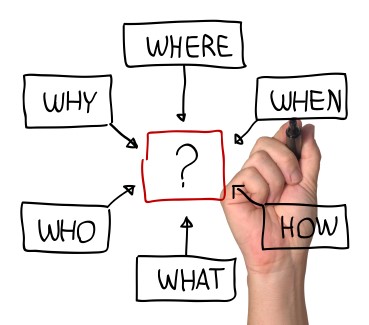Lesson Learned #17
 One of our early clients asked us if we were interested in helping him develop a strategy for one his company’s divisions. We said of course, and without asking him enough questions we drew up a proposal which laid out a fairly classical approach to developing a strategy. The proposal looked at studying the current market situation, establishing goals and objectives and then developing specific action plans. He looked at it and then said, “Too ‘text book’ guys. Before you go out and spend time and money analyzing the market place I want you to figure out what or even if we have a problem. If we have a problem then we need a strategy to fix it.”
One of our early clients asked us if we were interested in helping him develop a strategy for one his company’s divisions. We said of course, and without asking him enough questions we drew up a proposal which laid out a fairly classical approach to developing a strategy. The proposal looked at studying the current market situation, establishing goals and objectives and then developing specific action plans. He looked at it and then said, “Too ‘text book’ guys. Before you go out and spend time and money analyzing the market place I want you to figure out what or even if we have a problem. If we have a problem then we need a strategy to fix it.”
Nodding in agreement, without really understanding what he was saying, we asked him to explain what he meant. He said most strategies he had come across in his career were too generic. “Everyone says they want to improve customer service and employee satisfaction, reduce cost and grow. That’s a basic wish list for every company on the planet. But there’s usually not enough thought gone into trying to figure out what the actual problem is that requires a strategy. A good strategy addresses the current gaps in the value you are bringing to the market, your ability to make money, and your organizational strengths.” He carried on explaining how he would approach developing a strategy. We listened intently, furiously making notes while at the same time trying to look slightly bored. We learned a great deal about how to make sure a strategy a practical and useful tool, rather than a self-important document destined to be confined to the CEO’s desk drawer.
The essence of what he told us what that you need to figure out the problem before you start searching for a solution. To do this you need some sense of what your objectives are and then work backwards. Let’s say a company wants to earn a 10% profit after tax in three years. If you are currently earning 5% then you have identified the gap, or the initial problem. To close the gap you can grow your revenue, reduce costs, or both. If you think you need to grow your revenue, you can do the math and figure out by how much. If you look at your historical growth and project it out over three years, and you are well below where you would need to be, then you have identified another problem. Do you add products? Change how you sell? Acquire another company? Starting with the answer allows you to put a stake in the ground and then identify the obstacles that are going to stop you from getting to where you want to be. It helps you identify what the practical problems really are. Once you understand the problems, it is much easier to craft a game plan to try to figure out what you are going to do about it. The strategy then becomes a working road map, and a problem solving tool, that can help guide how you allocate your time and resources.